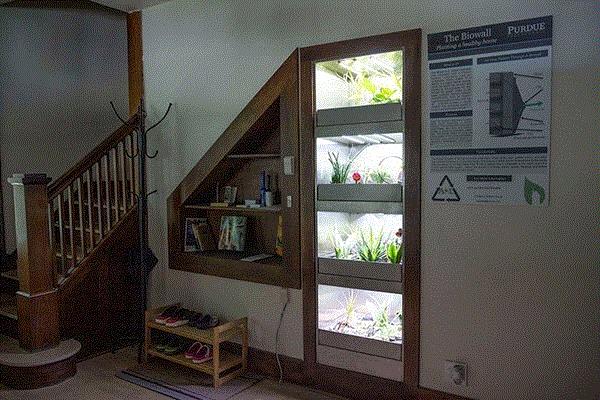Is Neem Oil Contaminated?
Things you don’t want to find out: The so-called organic neem oil you bought just tested positive for Malathion, a non-organic pesticide. Luckily for the grower in question, he actually had the product tested before he applied it to his crop. When the Oregon Department of Agriculture (ODA) investigated after the complaint, they tested Southern Ag’s Triple Action Neem Oil and found malathion, chlorpyrifos, and permethrin—all pesticides that weren’t on the label and that aren’t approved for organic production. Further testing of other neem oil brands also identified non-organic active ingredients.
As a result, the ODA issued a state-wide “stop sale, use, and removal” order for six neem oil products. You can read the full list and details HERE. Pennsylvania responded with a similar action this month, notifying both retailers and consumers. It’s unclear if any other states will issue warnings or ban sales.
But, of course, that’s not the whole story. According to this article, Southern Agriculture Insecticides has stated that this is a misunderstanding and a contamination issue, and that their Triple Action Neem Oil was well within the EPA contamination limits. Indeed, the pesticides detected were all at levels under 1 ppm. They say those levels aren't high enough to be considered an active ingredient. We’ll try to keep tabs on this as it develops so that you can have all the facts and understand how it may impact your pest control program.

First Round of REAP Grants Issued
The USDA announced 58 grants in 17 states under the Rural Energy for America Program. The grants help lower energy costs through renewable energy and efficiency improvements. Only one greenhouse made the list in this first round, but this first announcement should be just the tip of the iceberg. It only included about $1 million in funding; Congress appropriated $50 million for REAP grants and loan guarantees.
Pleasant View Greenhouses in Hopkins County, Kentucky, received a $20,000 grant to purchase and install a 29.92 kW photovoltaic array system at their greenhouse. Their system will generate approximately 42,000 kW annually, which is enough electricity to power about four homes.
New Biocontrol Agent: Alluma
There’s a new biological control agent on the market from Sym-Agro. They just introduced Alluma, which contains 15% garlic oil and is marketed as a tank mix option. The plant-based essential oil acts as an insecticide, insect repellent and miticide.
“Alluma is an innovative formulation that works as a contact repellent and translaminar product, as well as a feeding and oviposition deterrent,” says Sym-Agro President Peter Bierma. “It performs best as a synergist added to growers’ existing insecticide programs to target hard-to-control pests like mites, thrips and lepidoptera.”
Alluma is listed for both indoor and outdoor uses on fruits, nuts, vegetables, herbs, grains, grasses, mushrooms and other crops. You can read more about it HERE.
But I’m also going to leave you with a few wise words from my colleague JC Chong at PestTalks, who writes, "I’m often concerned with phytotoxicity when using an essential oil. Alluma’s label recommends 'do not apply to sensitive plants without testing,' but no sensitive plants are listed. If you use this product, do a phytotoxicity trial a few days before spraying on all crops."

The Biowall of the Future
We all know how, for eons, plants have been doing their good work for the planet—cleaning the air and absorbing pollutants. And the green industry is all about promoting houseplants for healthier air. But Purdue University's Biowall is taking it one step further and incorporating plants into the HVAC system.
The Biowall puts plants in a shelving system, with loosely packed growth media. The shelves are integrated into the return duct of an HVAC unit, so the plant’s roots absorb volatile organic compounds as air passes through.

The system has been tested in a showcase sustainable house. They’ve also worked with data from NASA and other organizations to determine which plants perform the best. Bill Hutzl, a professor of mechanical engineering technology in Purdue’s Polytechnic Institute, who leads the research team, has been pursuing a patent, as well.
It remains to be seen if this Biowall makes it to market; their website says they’re looking for funding, technology, design and marketing partners. More info HERE.

Ok, Lay it On Me: Plastics
I’m guessing if you read GreenTalks, you’ve also consumed the increasing buzz about single-use plastics. The public is getty touchy—very touchy.
But here’s a startling number: The Shelton Group just did a Pulse poll, which found that concern about plastics in the ocean ranks higher than concern about climate change (65% versus 58%). Get up to speed with this article in GreenBiz, which talks about how the issue impacts brands and how it affects sales at retail.
I’m curious: where does your business fall on the plastics issue? Are you doing the same-old? Did you switch packaging? Are your customers asking for change? Email me: jwhite@ballpublishing.com.
Until next time,

Jennifer Duffield White
jwhite@ballpublishing.com
This email received by 25,252 loyal readers!
Want to be one of the lucky sponsors who reach those readers of GreenTalks? Drop Paul Black a line and he’ll tell you what a bargain it is!
GreenTalks® is a registered trademark of Ball Horticultural Company in the U.S.